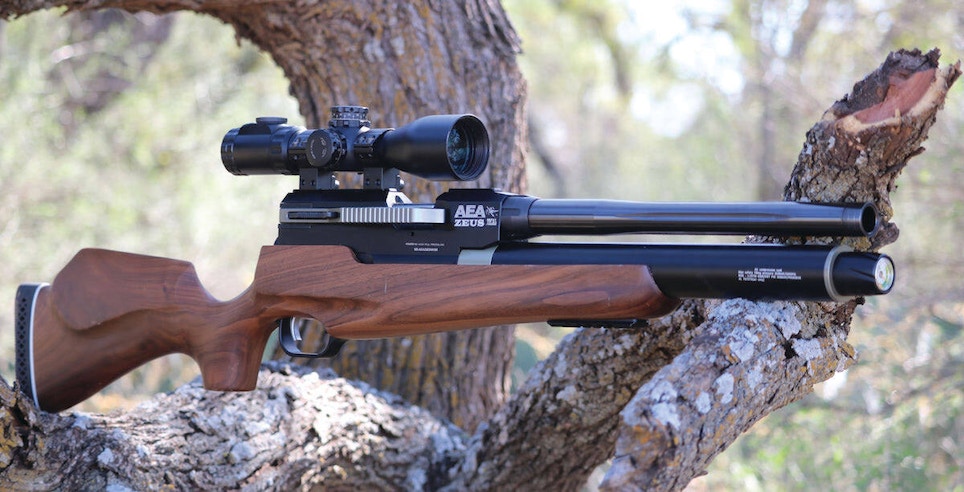Success often hinges on the ability to read the emerging markets, and airguns represent a growth category for shooting sports retailers.
Every year there are fewer open spaces and places to shoot firearms. This involves everything from noise challenges to distance restrictions when considering that high-power rifle shooting requires a lot of space.
One logical question for retailers is: How much emphasis should be placed on airguns, given the limited amount of space in the store? The answer depends on several factors, not the least of which is the nature of the individual store’s customer base.
Here, the concept is to think about potential as much or more than historic customer interest. Airguns represent a category that has widespread potential, even if there has been little or no action on that front locally in the past.
Forward thinking can go a long way in most situations because it imagines what can or should be rather than what is or has been. What has been in the past is moot, at best, because, by definition, it is already history. What exists right now will be tomorrow’s history and what will be in the future most likely will be molded by what is done today.
This may seem circular and to a degree, it is. But it also happens to be the way the world works.
Long History
It is generally accepted that airguns date back to 1580. That was 40 years before the pilgrims on the Mayflower landed at Plymouth Rock.
Famously, the airgun played a part in American history when reports indicated that a .46-caliber airgun designed by C.G. Girandoni was carried by Meriwether Lewis on the 1803-1806 Lewis and Clark expedition that explored the U.S. from Missouri to the Pacific Ocean.
The airgun used on the expedition could fire 22 shots in a minute. The 201-grain round balls had a muzzle velocity of about 500 feet per second. That was a time even before the percussion cap or self-contained cartridge existed, and a time when modern firearms were flintlocks, which had a standard rate of fire of three rounds per minute.
Ironically, when Meriwether Lewis used his airgun on the expedition westward, it constituted perhaps the first use of a “high capacity” magazine “assault rifle” in U.S. history. His airgun had a tubular magazine that held 21 round balls.
Long past is the time when airguns were nothing more than BB guns and basic pellet guns. Now there are big-game airguns that deliver performance similar to muzzleloading rifles and shotguns. There are even airguns that are being used on safari in Africa.
Closer to home, more and more states are allowing airguns to be used for big-game animals like deer and wild boar. Safari Club International has opened a category for airguns in its record book.
These are just some of the expanded uses for airguns in the gun world, and all of this is happening without decreasing the traditional interests and market for airguns. It is a situation where everything involved is more, which signals the potential for more sales all around.
In addition to the more serious hunting airguns of today, there are many air pistols that are the same size and shape as real firearms. These serve as great pistols for practice shooting, especially since such airgun shooting can be done indoors — like in the person’s house.
The bottom line is that there are airguns for just about everyone and for just about every kind of application. Such universality begs a question when it comes to sales, and the answer is simple: Increase the in-store focus on airguns and increase sales — sales that are attached to some very favorable profit margins.
Regardless of how the airgun is viewed, there is one undeniable truth: Airguns serve well as instruments to introduce youngsters and newcomers to the shooting sports. That alone is worth serious consideration.
The future of the shooting sports hinges on long-term, continual recruitment. This industry is under attack from all angles. Anti-hunters want to end all hunting, and gun confiscation proponents in league with their counterparts in government want to disarm the entire populace.
Politics are a numbers game — numbers reflected in amounts of money and numbers of votes. Except for the gun buying panic that was triggered by a combination of the pandemic and social unrest a few years ago, the percentage of the population that owned guns was on a slow, but steady decline.
Here is where it’s easy to lose the forest in the trees. Yes, the actual number of gun owners was on a slight increase. But the increase in the number of people outstripped it, meaning that a smaller percentage rather than a smaller number existed.
What this means is that, over time, the political clout of the gun world diminishes without steady and meaningful recruitment of new shooters, hunters and gun owners.
In that sense, it is ironic that the future of firearms very likely could depend on the sale and use of airguns, if one assumes that airguns are gateway guns for newcomers.
Which brings us back to the local customer base and why it is so critically important for both the store’s business future, as well as for the entire future of the shooting sports themselves.
In the end, the bottom line is the bottom line. Anything that expands the customer base is good for sales, simply because more buyers mean more sales. It’s not rocket science.






